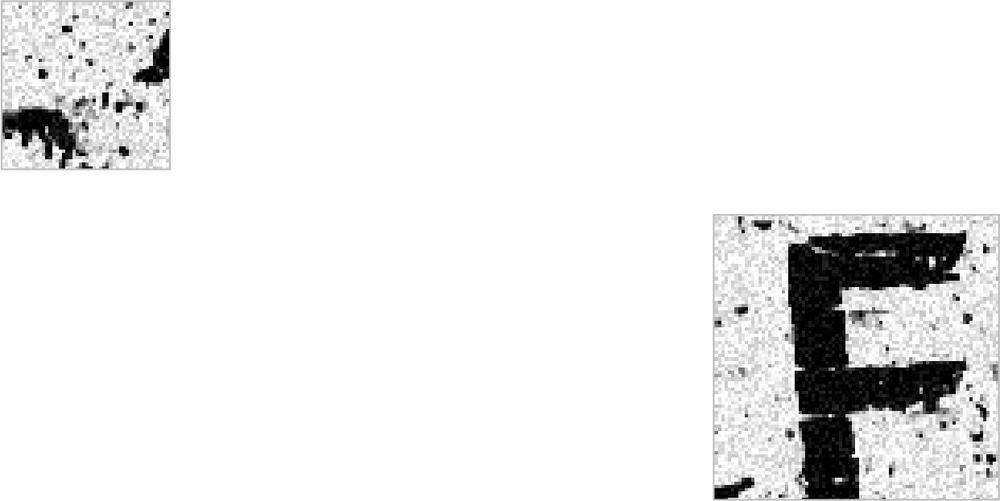22
SUBTRACTIVE NETWORKS STUDIO
[USA]
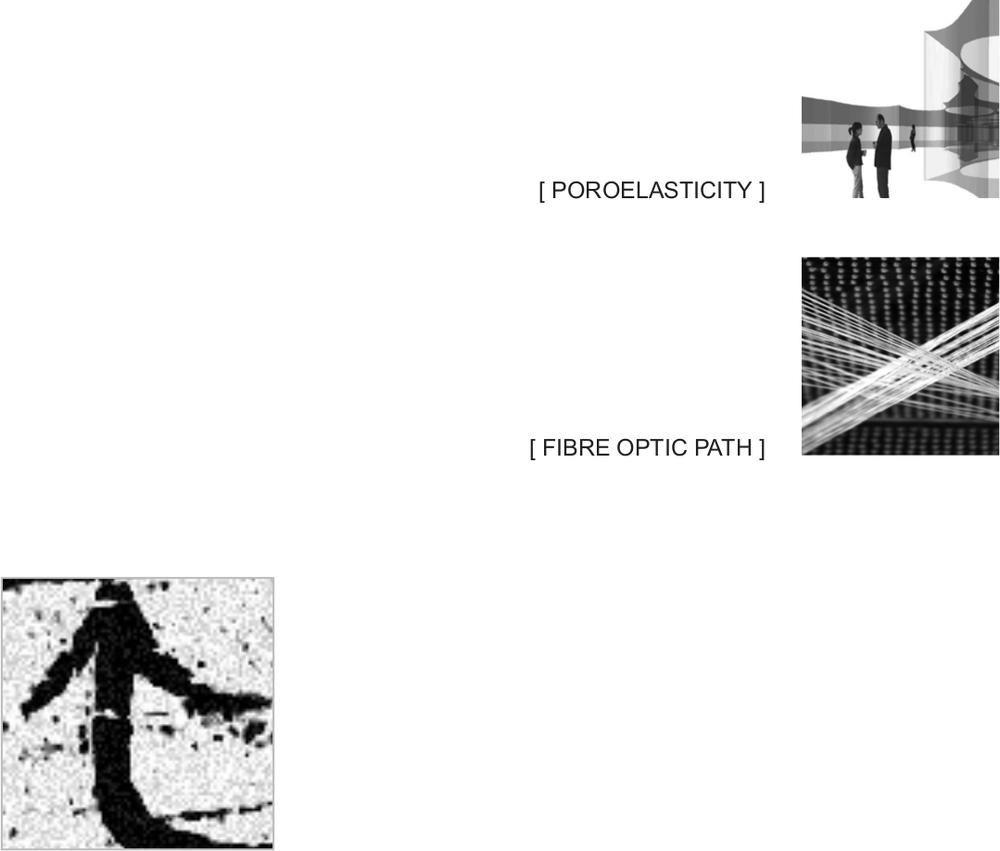 240
240
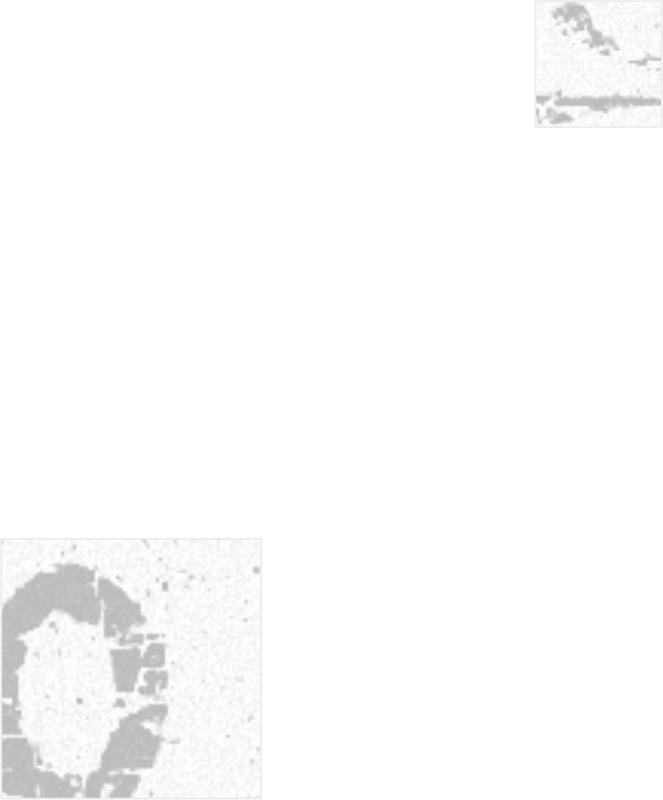 241
241
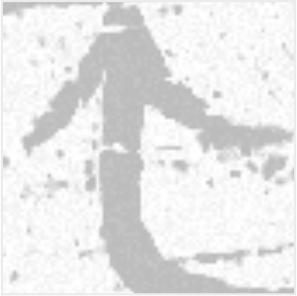
TUTORS : LISA IWAMOTO + CRAIG SCOTT [ USA ]
Visions for Cockatoo Island have gone through significant shifts, particularly in recent years. Once seen as predominantly utilitarian, the island’s connection to Sydney and the Harbour has been redefined as a place for environmental rehabilitation, leisure and entertainment. There is a unique opportunity to rethink its the role in relation to a public landscape. Implicit in the project is that the design must grapple with engaging the immediate site specificity of Cockatoo Island while addressing the larger Urban Island context.
To address this, the studio explored ideas of self-similarity and transitive relationships as a means to generate architectural systems that span across the scales of built space to landscape. A self similar object is exactly or approximately similar to a part of itself. Self similar forms can be found at all scales in the natural world, are visible and invisible, and are often self-organizing. They range from cellular structures to sound waves to coastlines. These systems are inherently sophisticated as they not only follow their own internal logics, but are also adaptable to external forces. In our case, these external forces are tied to program, site, and larger phenomenal effects. The question for the studio was how self similarity can be employed to address multiple scales of occupation, and therefore made mutable to the variable constraints of both the local and larger urban conditions.
In particular, this studio focused on a strategy for developing a negative space that could evolve to the scale of landscape infrastructure. The students investigated subtractive spacemaking strategies - a tactic formed as a direct response to the large plateau that physically dominates Cockatoo Island and is an integral part of its built history. Dealing directly with the plateau allowed students to focus on spatial relationships rather than romanticize the existing buildings. Historically, erasures of the city fabric have had mixed results, such as during the urban renewal movement in the 60’s. Rather than the broad strokes that defined this previous era, the studio looked at the creation of subtractive networks to form links to near and distant site phenomena.242
[ POROELASTICITY ]
PETER CHRISTENSEN | SHUI KWAN | JONATHAN SPICER

A gradual yet brutal process of cutting and filling has, over the last two centuries, moulded Cockatoo Island into a landscape that is at once highly artificial but also filled with poignant fragments of `nature’. Like a palimpsest in stone, steel and timber, the island’s topography and architecture tell the story of its past and point the way to its future.
New challenges face the island - how to adapt the resources of its penal and industrial past to serve a new role as a vibrant cultural centre at the heart of one of the world’s great harbours. Inspired by the convict era grain silos carved out of the island’s sandstone plateau, the project explores the use of voids within the rock to house these new functions. Using digital transformation techniques, the motif of the silos has been warped and twisted in plan and section to create a network 243of caverns and passages that will host spaces for exhibition, performance and entertainment. The island is surrounded by water, yet is not self-sufficient in this resource. The porosity of the sandstone plateau enables it to function as a giant sponge, storing and filtering rainwater. The voids serve as a water storage network, fed by a catchment terrain that mediates between voids, paths and buildings on the surface of the plateau.
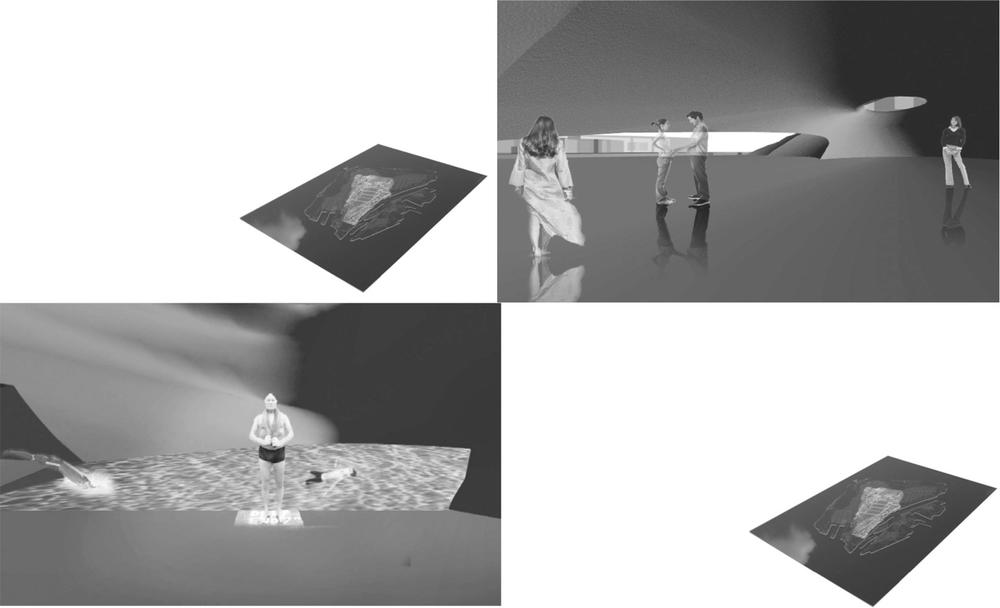
By looking within itself, Cockatoo Island can adapt to changing times. In the past, voids in the rock have served as passageways and storage. The next step is to build on this tradition of creating space within the rock. The new voids are fluid in space and time. A daily rhythm governs the flow of people from the outside during day-light to within after dark. The island `breathes’; the rock is a beautiful place both inside and out.244
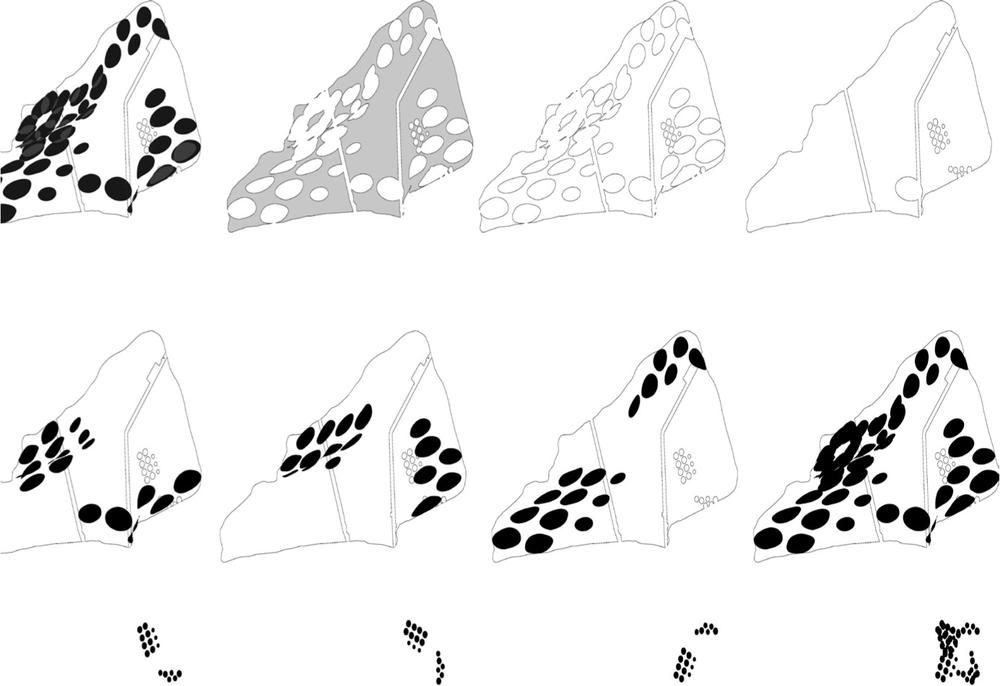 245
245
 246
246
[ FIBRE OPTIC PATH ]
SUFIAN SUPA’AT | CHAUNTELLE TRINH | DANIEL WONG


The striking topography of Cockatoo Island, originally a mass of naturally formed sandstone gradually subtracted away to resemble more a giant solid mass atop of a large plateau. The remaining sandstone solid bears great presence. There is much history in the tunnels, silos and surfaces alone, all of them cut and carved over time. The negative space created by excavation offers a unique internal experience that contrasts with the external exaggerated spatiality and sense of scale.247


We proposed an experiential scheme of hollowing out two new tunnels running East-West and North-South. The internal volume of each tunnel lofts from a vertical to a horizontal plane as walls turn clockwise to form floor and ceiling.
This composition focuses on the rising and setting sun and the variations of light and colour within the tunnels throughout the day. Fibre optic cables connect and direct the tunnels internally and externally. Sunlight is channelled inwards to indicate an impression of sky to the interior.248
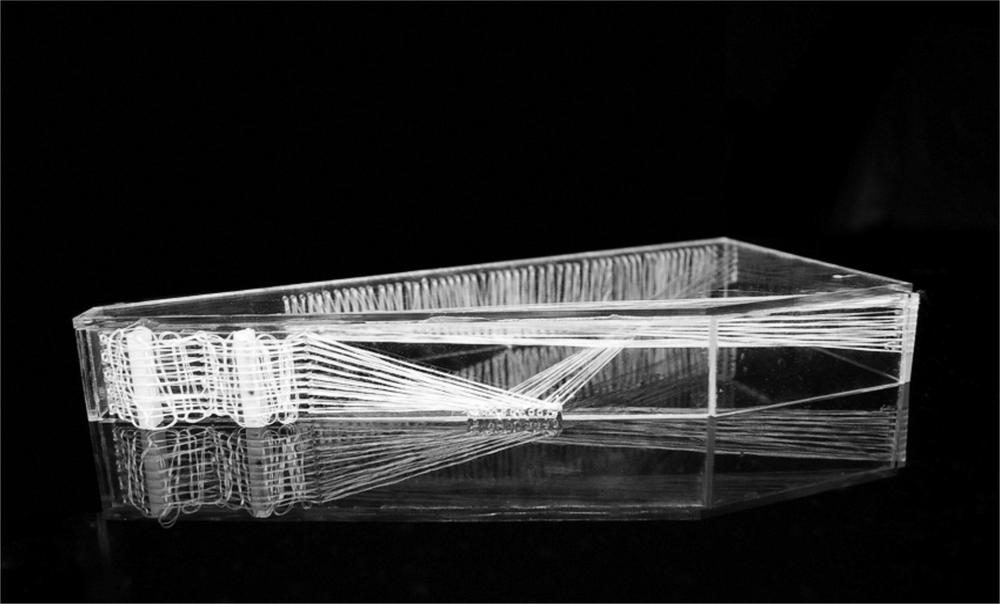 249
249
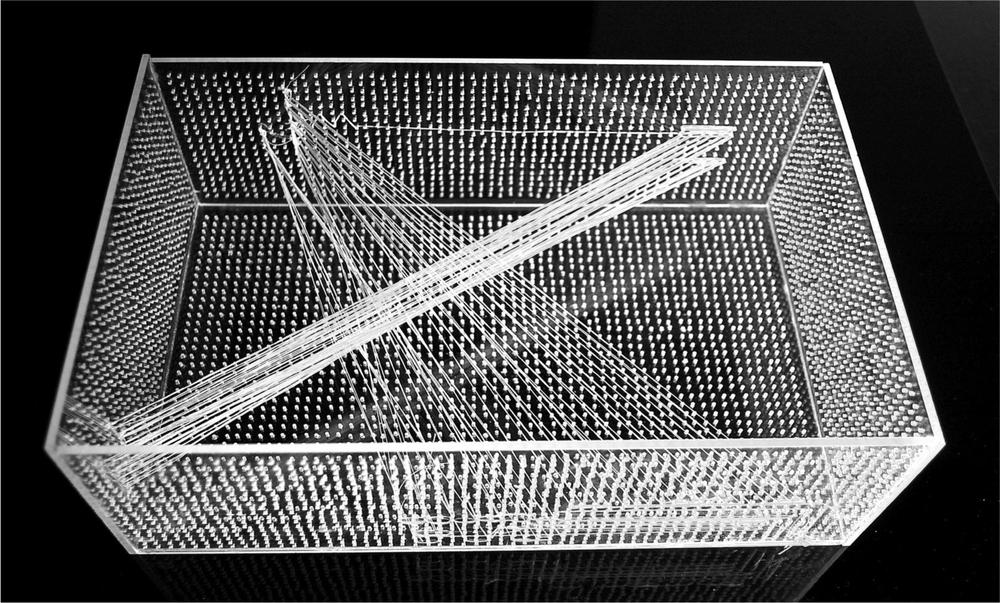 250
250
